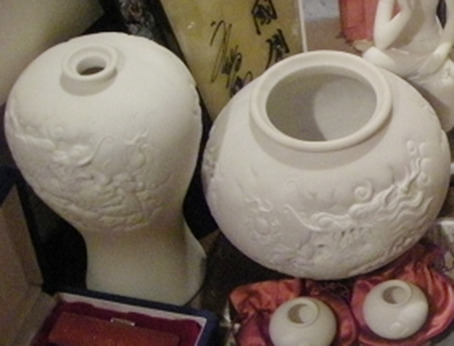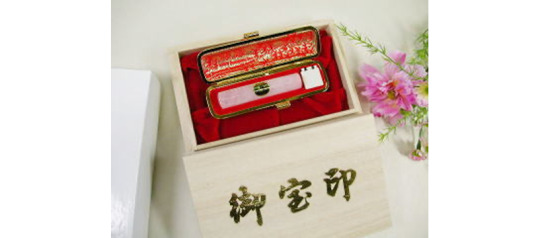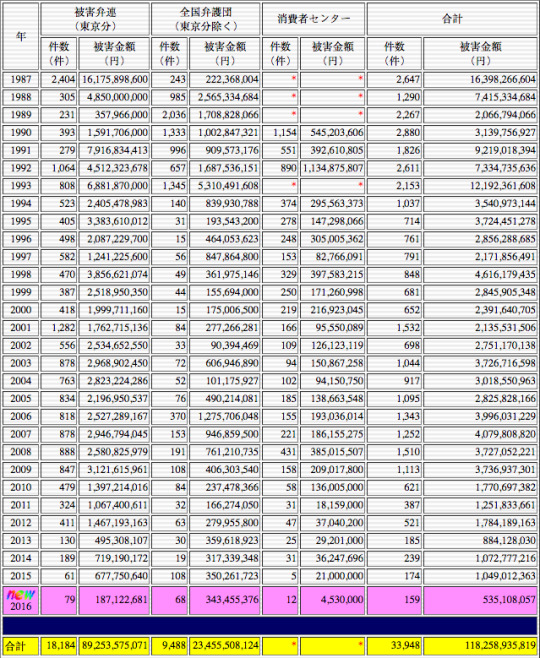#as per usual he meets three others who will have access to his sekai as well
Explore tagged Tumblr posts
Text
i've revived myself in the submas tag to talk about the funny train blorbo. emmet has no escape from my grip <3
every day i play the game of how many games can i throw him into and so here's a new one: project sekai. i'm throwing him into the funny hatsune miku gacha game.
story: 16 year old kudari lives (what he calls) a sad life. he can't remember anything before being taken in by johanna at 14. as the new school year rapidly approaches, he can't help but wonder what kind of tracks the future will bring him to. he knows he wants to bring smiles to others but just doesn't know how. one day, a mysterious song called 'untitled' appears in his playlist and he's transported to his SEKAI. it's a magical train filled with many childish decorations. from there he meets miku and kaito before being sent back. he thinks it was all a dream, but little does he know it's the start of a new adventure.
#ace rambles about aus#the fool had ideas#submas#subway boss emmet#subway master kudari#kudari#submas au#yes he''s a faller again#i can't help it <3#anyways he's like tsukasa and mafuyu in the way that his sekai was created from just his feelings alone#as per usual he meets three others who will have access to his sekai as well#one of which will be a descendant of one of the wardens#i'm gonna call the group out of this world express⭐#yes they're the wxs of the au#there may be a few other units shown but i'm not sure yet#they;re still in the pokemon world btw#project sekai: pokemon adventures au#<- temp name for now
8 notes
·
View notes
Text
“Moon betrayed his followers and distorted the church’s lofty goals by turning his movement into a huge money-making machine.”

“Moon’s Japanese Profits Bolster Efforts in U.S.”
By John Burgess and Michael Isikoff
Washington Post Staff Writers September 16, 1984
This article has been edited down. Link to original: http://www.washingtonpost.com/wp-srv/national/longterm/cult/unification/profit.htm
The Japanese branch of the Rev. Sun Myung Moon’s Unification Church has transferred at least $800 million over the past nine years into the United States to finance the church’s political activities and business operations, including The Washington Times newspaper, according to two former high-ranking church officials, Yoshikazu Soejima and Hiroaki Inoue.
This money is generated in Japan, primarily through a Tokyo-based business operation that uses church members to sell marble vases, miniature treasure pagodas and other religious icons that are represented as having supernatural powers, the former officials said. They also said the religious icons were distributed by Happy World Inc…
The sale of these items has been the principal source of capital for an international network of Unification Church operations, said Soejima and Inoue.
These operations range from Gloucester, Mass., tuna fleets to the anticommunist political lobbying of CAUSA International in Latin America and the United States.
Their accounts could explain how the Unification Church … has been able to support a major Washington newspaper that has lost an estimated $150 million during its first 2 ½ years of operations.
The Times, showcase of the church’s business network, is seen by Moon as an important source of political influence here, according to Soejima, the former chief of Unification Church public relations in Japan. Exhorted by pep talks to meet “the respected father’s” needs, Japanese church members have worked in recent years under sales quotas requiring them to transfer to the United States roughly $2.5 million a month earmarked for The Times, Soejima said.
“The Washington Times was the top priority of the entire Unification Church worldwide,” said Soejima, who was editor of Sekai Nippo (World Daily News), a church-controlled Tokyo newspaper, before being fired last October following a dispute with church officials over control of the paper.
Soejima, 37, is the highest-level church official to break with Moon and publicly discuss the church’s operations. In five lengthy interviews with The Washington Post in Tokyo, he provided details about church finances that were supported by hand-written notes he said he had made after monthly meetings of top church financial officials in 1981 and 1982.
His statements also were supported by Inoue, who headed church operations on Shikoku Island before being fired by the church and who sat in on four of the interviews with Soejima. …
Soejima said he joined the Unification Church as an idealistic university student nearly 20 years ago and that he continues to believe in its public objectives of uniting world Christianity and eradicating communism.
But, he charged, Moon had betrayed his followers and distorted the church’s lofty goals by turning his movement into a huge money-making machine.
“By the end of 1975, the main activity of the church was collecting money, buying lots of real estate in Korea and the United States and starting a lot of businesses,” Soejima said. Moon “is not working for the world, but for himself,” he said.
...
Soejima estimated the number of Japanese members at 8,000 and quotes Moon as saying in 1982 that he was disappointed because there were only 2,000 members in the United States – a number that is slightly lower than the estimates of about 3,000 members supplied by former church members and a figure of 5,000 cited by Gutman….
Based on their former access to internal church documents and Soejima’s attendance at numerous top-level meetings of church financial officials, Soejima and Inoue said their conservative estimate is that the church has transferred at least $800 million to the United States in the past nine years. Starting in 1975, they said, the church mobilized its Japanese members for a massive fund-raising effort that has used high-pressure sales techniques to take advantage of the religious superstitions of Japanese consumers.
Handwritten notes that Soejima made at some church finance meetings indicate that the Japanese church was taking in more than $100 million a year during 1981 and 1982, most of which was transferred to church headquarters in New York.
One set of notes, based on a church financial report from June 10 to Sept. 10, 1981, states that the Japanese church raised about $54 million during the three-month period (based on 1981 exchange rates), of which about $38 million was sent “out” – a term that Soejima said meant abroad. That figure was representative of the year’s other three quarters, he said. … That would mean the church earned about $122 million in 1982, of which 90 percent was shipped abroad, according to Soejima.
He said these transactions were usually made through international bank transfers, but large amounts of cash were carried into the United States by church members because “sometimes Moon wants money right away. Getting permission to send it by bank transfer takes time,” Soejima said.
When Moon conducted a “mass wedding” of 2,075 couples in Madison Square Garden in 1982, 400 Japanese men and women were flown over for the event. “Each person took, I think, about $2,000,” Soejima said.
According to Soejima, a confidential financial statement would be distributed to 10 to 12 top Japanese church officials each month. These statements would show roughly $2.5 million earmarked for The Washington Times.
Each month figures on actual spending would show the previous month’s target had been met. Senior officials would then deliver pep talks on “the respected father’s” needs for a better showing next time, he said.
“Always, it ended with a statement that this is where we stand now, so go out and fight harder,” Soejima said.
According to his account, the ability of the church to generate these funds is based on its control of Happy World Inc., a company that is headquartered in a utilitarian fifth-floor office in a Tokyo business district and whose president, Motoo Furuta, is chief of the Japanese church’s financial bureau, according to Soejima. …
Happy World’s main activity is importing of consumer goods, such as marble vases, miniature treasure pagodas and ginseng teas from church-owned companies in South Korea, including Il Shin Stoneworks, Tong Il Co. Ltd. and Il Hwa Co. Ltd., according to Nakada and the company’s sales brochures.
The vases, pagodas, ginseng and other consumer items are distributed to about 10 wholesale and retail outlets throughout Japan that, according to Soejima and Inoue, are controlled by the church and use church members as door-to-door salesmen.
More than 2,600 complaints about the sale of marble vases, ivory seals and miniature pagodas of the kind that are often sold by church members were lodged with the Japan Consumer Information Center between 1976 and 1982, according to a report made by the government-funded agency.

▲ Name seal
Hundreds of these complaints involved reported cases of intimidation, threats or misrepresentations in which salesmen preyed on the “religious anxieties” of consumers, according to the center’s report. The small objects often were portrayed as having mystical powers that could save unhappy marriages, cure illnesses or purge the evil spirits of samurai ancestors, the report said.
The center has published pamphlets to warn consumers about the sales of these items. In one case cited in a center pamphlet, a woman whose husband had just died in an auto accident was being sold one of the objects. The salesman told her the evil spirit of a samurai ancestor who had killed with his sword was tormenting the family. The sale would solve that. “If you don’t buy it, the same evil spirit will continue with your children and they will meet the same fate,” the salesmen said, according to the pamphlet.
The salesmen, Soejima and Inoue said, are instructed never to identify themselves as being with the Unification Church or Happy World.
“We had orders that, when engaging in economic activity, never say you are a member of the church,” Inoue said.

According to Soejima and others, the profits from sales of these items can be enormous. In an extreme case, he said, a vase that cost about $21 was sold for $8,300. A quantity of ginseng worth about $42 sold for eight times that amount. One salesmen can raise about $4,000 per month, he said.
The salesmen’s expenses are minimal. During his years in the church, Soejima said, he often visited church members at grimy group houses where they slept half a dozen to a room. The members receive no salary from the church and immediately hand over all their sales proceeds to the house “leader.” Once a month, Soejima said, a church official comes to the house and “they collect it in cash and bring it to Tokyo.”
In a two-hour interview in Tokyo, four former church members told of being assigned to sales soon after joining. Church officials conducted sales-training lectures using films and stressed the need for money to finance “the restoration” under way in the United States.
All four members, who asked not to be identified, said they were told of Happy World’s role soon after joining. “I was told it was the economic department of the Unification Church,” said a 24-year-old woman who had sold ivory seals door-to-door.
The primary role of The Washington Times within Moon’s global organization was underscored in ways other than the financial support it received from Japan, Soejima said. He cited a series of meetings in February 1983 that began at church headquarters at the New Yorker Hotel, where about 70 church officials from round the world gathered to celebrate Moon’s birthday.
Full story HERE

▲ Claims handled by the Japanese Lawyers Association against the UC/FFWPU for their ‘Spiritual Sales’ fraud.
Column 1 Year Column 2 Complaints recorded by Organizations in Tokyo Column 3 Complaints recorded by Organizations outside Tokyo Column 4 Complaints recorded by Consumer Information Offices throughout Japan Column 5 Totals
The second total from the left (in yellow) shows that over 18,000 legal claims for compensation from FFWPU were made up to 2016. The right hand total shows a total of 118,258,935,819 yen by the end of 2016.
Recently total claims have exceeded an astonishing $1billion.
The people of Japan are not known for filing frivolous lawsuits. Many of the FFWPU / UC victims are not likely to step forward to keep from losing face.
“The true figure of victimized citizens, however, is assumed to be over ten times more than what is recorded, for the fear of bad luck from ancestors and repercussions from the FFWPU / Unification Church.”
Some complaints are settled out of court.
Since Sun Myung Moon died in 2012, Hak Ja Han has headed the Family Federation for World Peace and Unification. The pressure on the Japanese members has continued unabated.
____________________________________
¥ 1,400,000 to be paid to Hak Ja Han’s church by each Japanese FFWPU family.
Time period: October 20 - December 26, 2015
百四十万円 = ¥ 1,400,000 = $11,400 USD for each UC/FFWPU family
Believers are desperately looking everywhere to borrow or get the money any way they can.
____________________________________
Moon founded “The World’s Greediest Church”
A huge FFWPU scam in Japan is revealed
How Moon bought protection in Japan
Suicide of Moon money mule in Uruguay
In 2000, Japanese members were pressured to buy Moon’s Cheon Seong Gyeong for $30,000 for each book!
これが『統一教会』の秘部だ
The Atsuko Kumon Hong “suicide / murder” of August 2013
Asian ginseng – there is currently no conclusive evidence supporting any health benefits
Wikipedia – As of 2017, there is insufficient evidence to indicate that ginseng has any health effects
Religious Freedom for Japanese Members! (The FFWPU established a slave caste.)
Sun Myung Moon – Emperor of the Universe
1 note
·
View note